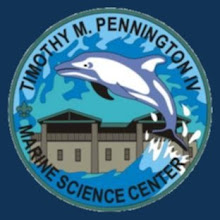Saturday, June 25, 2011
California Reef Check Survey Dive
Check out the video below of Cari moving through the kelp forest counting organisms along a transect line.
Sunday, June 12, 2011
Summer 2011 has begun....
Here are a few of the resident leopard sharks in one of our touch tanks out on the science center porch.
Thursday, August 12, 2010
Good Bye!
It has been a great 1.5 years and I'd like to thank all of the staff who have worked for me over that time.
The new director will be David Chan who will start in a few weeks.
Cheers,
Kevin Erickson
Thursday, February 11, 2010
Hiring 4 Summer Staff
Wednesday, December 16, 2009
Reef Check California - Nearshore Ecosystem Database
Try checking out Reef Check's nearshore ecosystem database website at: http://ned.reefcheck.org/
"Reef Check California is a network of informed and involved citizens, scientists and organizations that support the sustainable use and conservation of our nearshore marine resources. NED is your tool to input data from Reef Check California Surveys and view/query data collected at Reef Check California sites."
NOAA Approves Western and Central Pacific Bigeye Tuna Catch Limit
December 9, 2009
NOAA has established a catch limit for bigeye tuna (Thunnus obesus) in the U.S. pelagic longline fisheries in the western and central Pacific Ocean for each of the calendar years 2009, 2010, and 2011, having determined that the species’ Pacific Ocean population is subject to overfishing.
The rule, published Monday in the Federal Register, puts in place catch limits for longline fisheries, which target adult bigeye. Under this rule, the U.S. will reduce its longline catch of bigeye tuna from the 2004 baseline catch of 4,181 metric tons (mt) to 3,763 mt.
Once the 3,763 mt catch limit is reached in any of those years, retaining, shipping or landing bigeye tuna caught in the western and central Pacific Ocean will be prohibited for the remainder of the year, with limited exceptions. The catch limit will not apply to the longline fisheries of American Samoa, Guam or the Commonwealth of the Northern Mariana Islands.
Members of the Western and Central Pacific Fisheries Commission, the international body which manages highly migratory fish species like bigeye tuna, agreed to the catch limits in both their longline and purse seine fisheries at their meeting in December 2008.
Earlier this year, NOAA published a rule limiting fishing days by purse seine vessels and restricting tuna purse seine sets on floating objects known as fish aggregation devices, in an effort to reduce the catch of juvenile bigeye tuna.
NOAA understands and predicts changes in the Earth's environment, from the depths of the ocean to the surface of the sun, and conserves and manages our coastal and marine resources.



